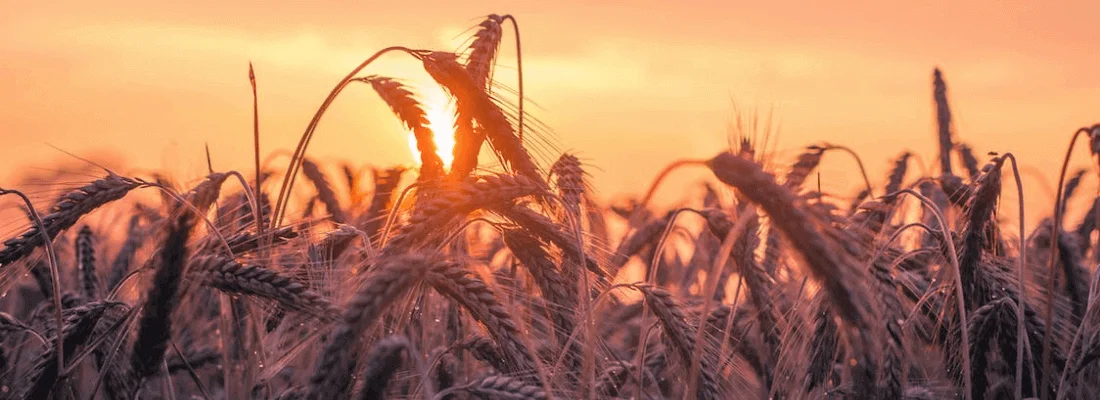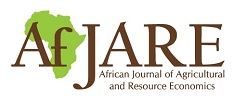


African Journal of Agricultural and Resource Economics (AfJARE)
A publication of the African Association of Agricultural Economists (AAAE)
Latest Publications
This paper examines the optimal land resource allocation for tree crop enterprises in the Eastern region of Ghana based on data collected from sampled cocoa, oil palm, and rubber farmers.
Potato (Solanum tuberosum L.) is known for its efficiency in converting resources into high-quality food, which can aid in poverty reduction. However, the potato yield in Rwanda has been declining, leading to farmer dissatisfaction with trading terms and a reliance on low prices in the value chain.
Facteurs déterminant l’adoption des stratégies d’adaptation au changement climatique par les agricultrices rurales au Burkina
En se basant sur les pratiques endogènes de restauration de la fertilité des sols les plus connues dans la région du nord du Burkina Faso, cet article analyse l’adoption de stratégies supplémentaires d’adaptation au changement climatique à l’aide de données primaires collectées auprès de 106 agricultrices.
Can public expenditure on agriculture mitigate the effect of climate variability on agricultural credit in Africa?
This study investigates how public agricultural expenditure can mitigate the effect of climate variability on banks’ agricultural credit supply in sub-Saharan Africa.
Farmers’ willingness to pay for agricultural extension services in Limpopo province, South Africa
This study employs a binary probit model on a sample of 319 smallholder farmers in Thulamela and Collins Chabane municipalities to examine their willingness to pay for agricultural extension services.
Relationship between poverty and climate: Does climate variability drive rural poverty in Zimbabwe?
Zimbabwe has set poverty reduction targets in a changing climate, yet the implications of climate variability for poverty remain under-explored.
Volume 19
This study was carried out to evaluate different spraying regimes for the production of two cowpea varieties (Ife Brown and IT2246) in the humid southwest agro-ecologies of Nigeria in order to recommend optimum spraying regimes for cowpea production in the zone.
Cet article analyse l’impact des chocs agro-climatiques sur la sécurité alimentaire des ménages ruraux sénégalais à l'aide d'un modèle probit ordonné. La méthode du score de consommation alimentaire est utilisée pour appréhender l'état de la sécurité alimentaire des ménages. L’étude montre que 14% des ménages vivant en milieu rural sont à consommation alimentaire faible, 17% à consommation alimentaire limite, et 69% à consommation alimentaire acceptable.
Willingness-to-pay (WTP) studies for traditional food products are plausibly affected by unobserved decisions and strategic collusion between the experimenter and respondents. Similarly, WTP estimates in developing countries using a one-time survey might be inconsistent, as the acceptance of new products likely varies with exposure to product attributes.
Volume 18 (2023)
Accessing water supply services remains a serious challenge in Wakiso District in Uganda, where most households travel long distances to collect water – a process that threatens their health, productivity and economic wellbeing.
Cette étude examine l'impact économique de l'utilisation des semences améliorées sur la sécurité alimentaire des ménages ruraux au Cameroun.
This study evaluated the effect of agriculture, industry, manufacturing and the service sector on economic growth for the period 1991 to 2020 using the autoregressive distributed lag stationarity (ARDL) bounds-testing approach.
Volume 17 (2022)
One of the three components of Rwanda’s flagship anti-poverty programme, Vision 2020 Umurenge (VUP), is the provision of credit to relatively poor households, nearly all of them farmers. In this paper we estimate the impact of the programme using high-quality household survey data from 2013/2014 and 2016/2017.
This study uses primary data from smallholder sugarcane farmers in Kenya to investigate how women’s empowerment affects household poverty. Instrumental-variable tobit (IV tobit) was used to determine the causality between women’s empowerment and household poverty.
Variability in climate and debility in soil fertility affect agrarian production, especially in sub-Saharan Africa, and thus threaten food security. This has prompted the seed sector to introduce various varieties of climate-smart maize in Kenya and release them in the market. In contrast, there is little experiential insight into how the adoption of these varieties by small-scale farmers affects their household income.


